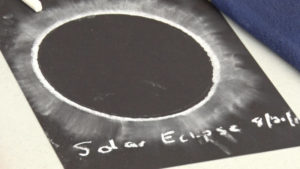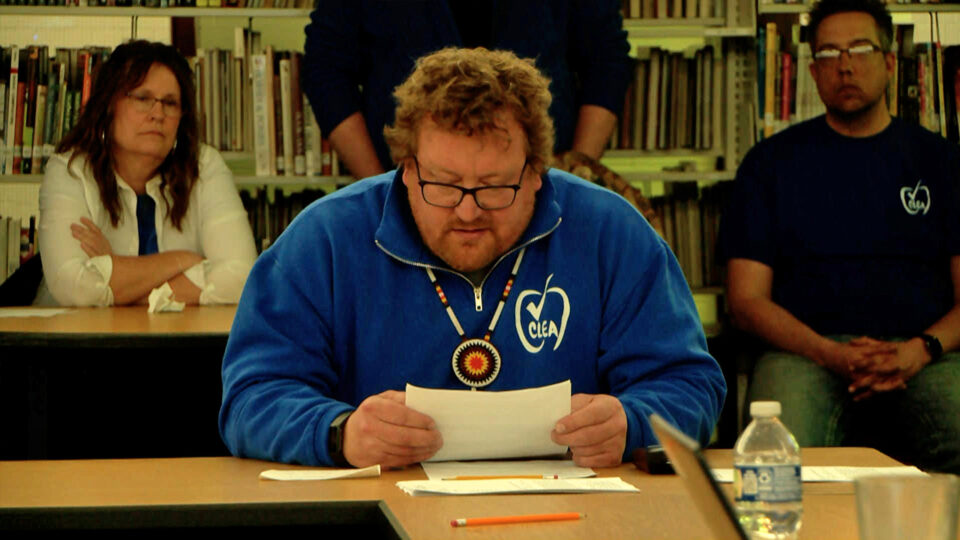Aug 21, 2017 | By: Haydee Clotter
Bemidji Watches Historic Solar Eclipse At Viewing Party
“It’s just really cool to see something that doesn’t happen very often,” said Angie Morales.
 The last time a total solar eclipse was visible in the U.S., the year was 1979. Bemidji had its own watch party for the historic event where the moon completely covers the sun.
The last time a total solar eclipse was visible in the U.S., the year was 1979. Bemidji had its own watch party for the historic event where the moon completely covers the sun.
Some will only lay their eyes on a solar eclipse once in their lifetime, but Laddie Elwell is one of the fortunate ones. Thirty-eight years ago, she drove to the Winnipeg Zoo in Canada and observed the eclipse.
“Dark and the birds, especially the owls responded to it just as though it were getting dark,” said Elwell. “They hooted and screamed.”
Elwell says it was fun to be in her hometown and see the solar eclipse again at the Beltrami County History Center.
“To be here with this many people and we were lucky that the sun peeked through the clouds and we did see it approaching,” said Elwell. “What was it, 85 percent coverage?”
One word to describe the experience could be…
“Awesome!” said Beltrami County History Center Executive Director Gary Rozman.
Bemidji was one of the many cities throughout the US to join in on the frenzy. 
“These astronomical celestial events bring people together not just in Bemidji, the world over,” said Rozman. “The U.S., of course, is lucky and that we’re getting the eclipse in full force.”
“Protect eyes from getting blind,” said Lillianah Bird, whom viewed the solar eclipse…
“It’s happening,” said Charlize Boe, whom viewed the solar eclipse.
“Just involved a piece of aluminum foil and a tack to pop a hole in it and inside is a white piece of paper,” said Julie Loxtercamp, whom viewed the solar eclipse.
“I cut a hole in it and poked a little hole through the…I put aluminum foil on the back there,” said William Hartwell, whom viewed the solar eclipse. “You look in the box and you can see the sun.”
The longest period when the moon completely blocks the sun is just under three minutes. That didn’t happen here, but guests had a clear view of the sun.
“There’s a really bright crescent of the sun and then there’s just a completely blacked out circle where you can’t really see anything,” said Angie Morales, whom viewed the solar eclipse. “It’s kind of the opposite of a crescent moon, I guess.”
The path of totality is nearly 70 miles wide that crossed the U.S. from West to East. The next solar eclipse for the U.S. is in 2024.







